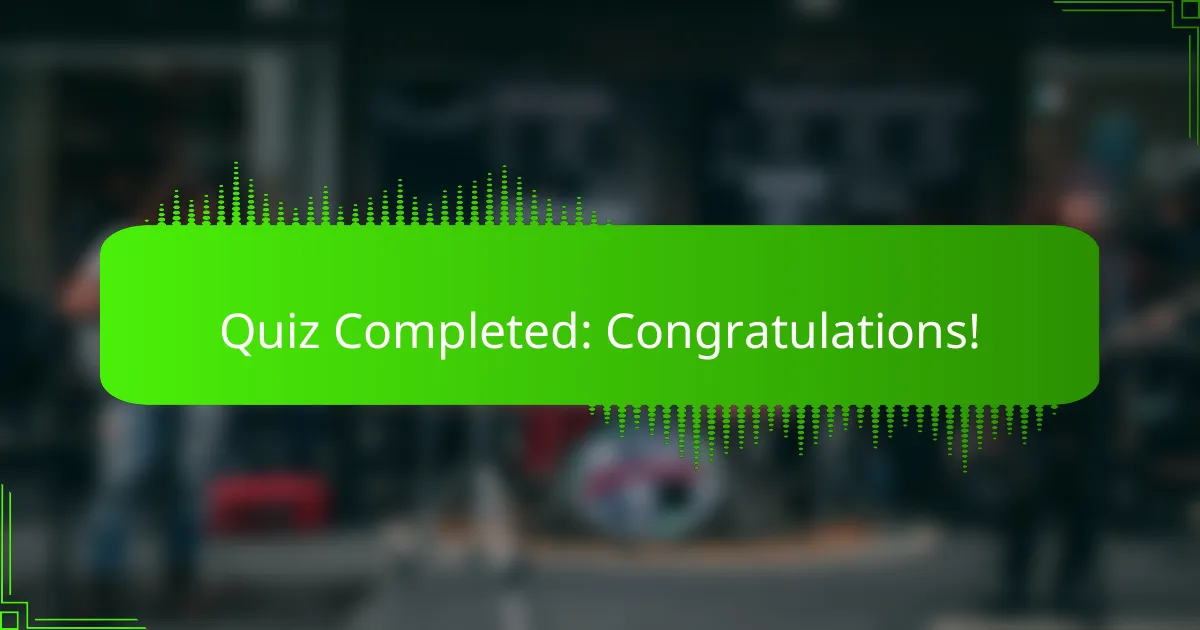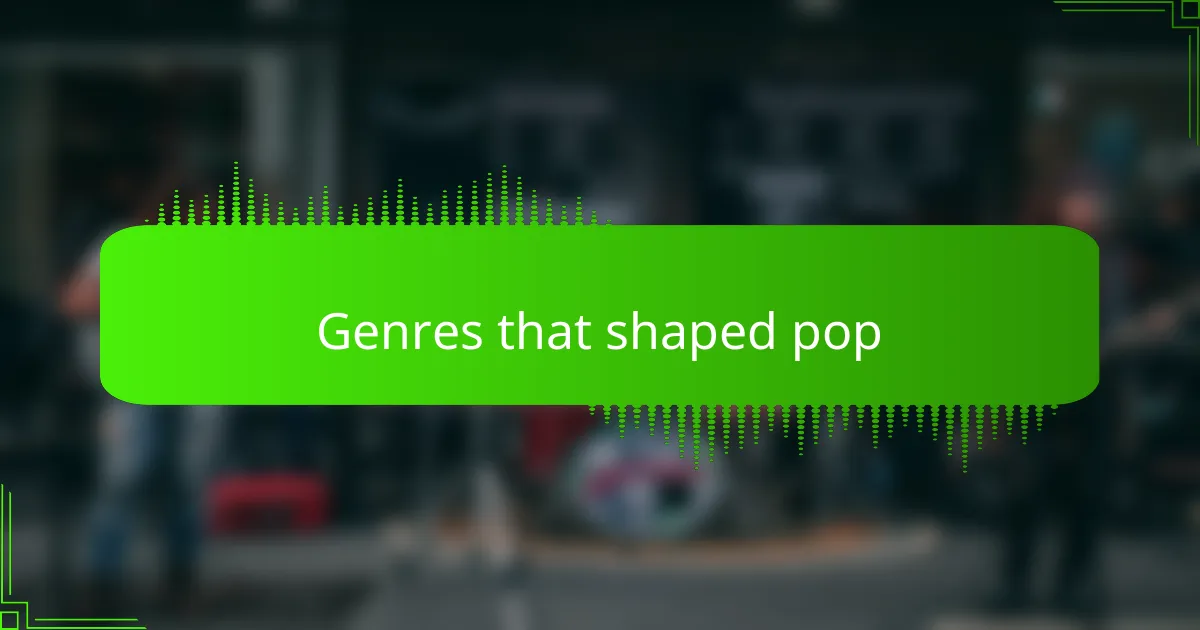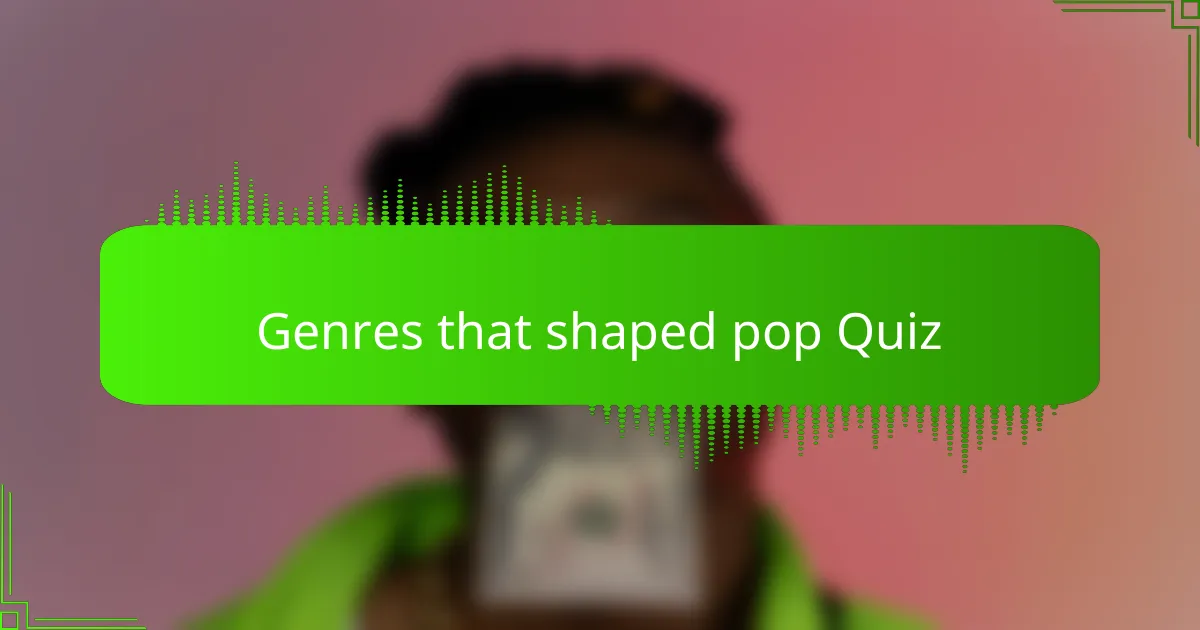
Quiz Completed: Congratulations!
Thank you for taking the time to complete our quiz on the genres that shaped pop music! We hope you enjoyed the journey through various musical styles and their impact on today’s popular songs. This quiz was not just a test of knowledge but also an opportunity to explore how different genres have influenced artists and trends over the decades.
Throughout the quiz, you may have discovered fascinating insights about the evolution of pop music, from the catchy hooks of disco to the raw energy of punk rock. Each genre has left its mark, contributing to the diverse soundscape we enjoy today. It’s amazing how the interplay of these musical forms helps to create the songs that resonate with millions.
Ready to deepen your understanding? Check out the next section on this page, where we dive deeper into the genres that shaped pop. You’ll find articles, interviews, and playlists that will enhance your knowledge and appreciation for the music you love. Keep exploring, and let the rhythm inspire you!

Genres that shaped pop
The Birth of Pop: Influences from Early Music Genres
Pop music as we know it today emerged in the mid-20th century, heavily influenced by genres like rock and roll, rhythm and blues, and jazz. Artists such as Elvis Presley and Chuck Berry played pivotal roles in popularizing these sounds. Their fusion of different musical elements laid the groundwork for pop’s catchy melodies and broad appeal.
Disco: The Genre that Redefined Dance Music
Disco music, prominent in the 1970s, revolutionized the pop landscape with its danceable beats and orchestral sounds. Artists like Donna Summer and the Bee Gees dominated the charts, merging pop with funk and soul. Disco’s influence is evident in today’s dance-pop music, shaping how artists produce and perform for dance audiences.
New Wave: 80s Innovation in Pop Identity
The New Wave genre emerged in the late 1970s, characterized by its synthesizers and a punk ethos. Bands such as Duran Duran and The Human League introduced a sleek and modern sound to pop music. Their innovation inspired future pop artists to incorporate electronic elements, significantly shifting the musical landscape.
Hip-Hop’s Integration into Pop Culture
In the late 20th century, hip-hop began to merge with pop, reshaping the genre’s identity. Artists like MC Hammer and later, the collaboration of pop stars with rappers showcased this integration. The combination of catchy hooks and rap verses became a defining formula in contemporary pop music, leading to the rise of artists like Drake and Cardi B.
Contemporary R&B: The Evolution of Modern Pop
Contemporary R&B has been pivotal in shaping modern pop since the 1990s. Artists like Beyoncé and Usher transformed traditional R&B with pop elements, leading to a new sound that resonates globally. Their influence highlights the genre’s ability to blend smooth vocals with catchy rhythms, making it a staple in today’s pop charts.
What genres that shaped pop?
Genres that shaped pop include rock, disco, hip-hop, R&B, and electronic music. Rock music influenced pop through artists like The Beatles and Michael Jackson, bringing catchy melodies and strong rhythms. Disco introduced danceable beats and vibrant production techniques, impacting artists like Madonna. Hip-hop contributed lyrical flow and sampling, reshaping mainstream music with figures like Jay-Z and Missy Elliott. R&B added soulful vocal styles, with artists like Whitney Houston inspiring pop ballads. Electronic music has transformed pop through synthesized sounds, seen in artists like Lady Gaga.
How did these genres influence pop music?
These genres influenced pop music by introducing new sounds, song structures, and cultural elements. Rock added guitar riffs and a rebellious spirit, while disco emphasized dance and rhythm. Hip-hop brought storytelling, beat-making, and diverse sampling techniques, which created a new lyrical approach. R&B infused emotive singing and smooth production, making pop more accessible and relatable. Electronic music modernized pop with synthetic sounds and innovative production methods, paving the way for contemporary artists.
Where can we see the impact of these genres on pop today?
The impact of these genres on pop is evident in charts and playlists across platforms like Spotify and Billboard. Currently, artists such as Dua Lipa and Ariana Grande incorporate disco influences in their dance tracks. Pop icons like Drake and Cardi B showcase hip-hop’s dominance in their music. Furthermore, the blend of R&B and pop is clear in tracks by artists like Khalid and SZA, reflecting a smooth, contemporary sound. Electronic elements are pervasive in mainstream tracks, elevating production quality and appeal.
When did these genres start influencing pop music?
Genres began influencing pop music in the mid-20th century. Rock music gained prominence in the 1950s with artists like Elvis Presley. The disco era peaked in the late 1970s, influencing pop until the early 1980s. Hip-hop emerged in the late 1970s, gradually permeating pop by the 1990s, especially with crossover hits. R&B’s influence became strong in the 1980s and 1990s, while electronic music started to shape pop in the 2000s and continues to do so today.
Who are key artists from these genres that have shaped pop?
Key artists include The Beatles and Elvis Presley from rock, Madonna and Bee Gees from disco, Jay-Z and Missy Elliott from hip-hop, Whitney Houston and Mariah Carey from R&B, and Daft Punk and Calvin Harris from electronic music. These artists have not only dominated the charts but also pushed the boundaries of pop music, helping to define the genre’s evolution through their influential styles, hit songs, and cultural impact.

